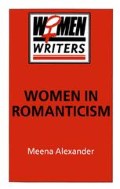Abstract
On the face of it, the contrast between Mary Wollstonecraft and Dorothy Wordsworth could not be greater. One thinks of Wollstonecraft’s fierce rebellion against the accepted codes of her day, contrasting it with the delicate reticence of her younger contemporary. The call for women’s rights and the public vindication of embattled female existence would seem distant, even irrelevant to a woman who lived out her life within the shadow of her brother’s massive genius, her very self a figuration of his vision of the feminine. Yet to think of Dorothy merely as the living image of Wordsworth’s Lucy (‘A violet by a mossy stone/Half hidden from the eye’) would be to miss out on her genius as a writing woman and her struggle for the privacy to exist without capitulating to the public realm and those trammels of propriety that had so troubled Mary Wollstonecraft.1
Preview
Unable to display preview. Download preview PDF.
Notes
For further reference see Rachel Mayer Brownstein, ‘The Private Life: Dorothy Wordsworth’s Journals’, Modern Language Quarterly 34 (1973) pp. 48–63.
Letter of April 1794 to Jane Pollard, The Letters of William and Dorothy Wordsworth: The Early Years, 1787–1805 (eds) Ernest de Selincourt, Chester Shaver (London: Clarendon Press, 1967) p. 111. Hereafter cited as EY.
The way in which the activity of walking underpins the textuality of the journals is developed in Meena Alexander, ‘Dorothy Wordsworth: The Grounds of Writing’, Women’s Studies, vol.14 (1987) no.3, pp. 195–210.
Julia Kristeva Revolution in Poetic Language, transl. Margaret Waller (New York: Columbia University Press, 1984) p. 26.
Letter to Coleridge in 1802, Letters of Charles and Mary Lamb, 1796–1802 (ed.) E.V. Lucas, 3 vols. (New Haven: Yale University Press, 1935) 3. 326.
See Heather Glen, Vision and Disenchantment: Blake’s Songs and Wordsworth’s Lyrical Ballads (Cambridge University Press, 1983).
Mary Wollstonecraft, Original Stories from Real Life; with Conversations. Calculated to Regulate the Affections and Form the Mind to Truth and Goodness (1788), (London: Joseph Johnson, 1791). Hereafter cited as OS. Followed by a page number.
See Dennis Welch, ‘Blake’s Response to Wollstonecraft’s Original Stories’, Blake: An Illustrated Quarterly 13 (Summer 1979) 1, pp. 4–15.
Simone de Beauvoir, The Second Sex, transl. H.M. Parshley (New York: Vintage, 1974) p. 480.
Adrienne Rich, ‘Conditions for Work: The Common World of Women’ in Working it Out (eds) Sara Ruddick and Pamela Daniels (New York: Pantheon, 1977) p. xvi.
Nel Noddings, Caring, A Feminine Approach to Ethical and Moral Education (Berkeley: University of California Press, 1984) pp. 41,44.
The Journals of Dorothy Wordsworth: The Alfoxden Journal (1798), The Grasmere Journals (1800–3) (ed.) Mary Moorman (Oxford University Press, 1971) p. 67. Hereafter cited as AGJ.
Sara Ruddick, ‘Maternal Thinking’ in Mothering, Essays in Feminist Theory (ed.) Joyce Trebilcot (Totowa: Rowan and Allanheld, 1984) pp. 213–30.
Susan Levin, Dorothy Wordsworth and Romanticism (New Brunswick: Rutgers University Press, 1987) p. 45. In her Appendices, Levin includes an edition of ‘Mary Jones and her Pet Lamb’.
Adrienne Rich, The Dream of a Common Language, Poems 1974–1977 (New York: Norton, 1978) p. 3.
Thomas De Quincey, Recollections of the Lakes and the Lake Poets (ed.) David Wright (Harmondsworth: Penguin, 1970) p. 188. Hereafter cited as R.
William Wordsworth, Poetical Works, 5 vols. (eds) E. de Selincourt, H. Darbishire (London: Clarendon Press, 1940–9) 2:216. Hereafter cited as PW.
Jacques Lacan, Ecrits, A Selection, transl. Alan Sheridan (New York: Norton, 1977) p. 104.
Marlon Ross elaborates on this point: ‘Naturalizing Gender: Woman’s Place in Wordsworth’s Ideological Landscape’, English Literary Histoty 53 (1986), pp. 391–410. Wordsworth’s poetic strategy squares with Sherry Ortner’s argument that in every culture woman is defined ‘as being of a lower order of existence than itself’.
Sherry Ortner, ‘Is Female to Male as Nature is to Culture?’ Women, Culture and Society, (eds) Michelle Rosaldo and Louise Lamphere (Stanford University Press, 1974).
Copyright information
© 1989 Meena Alexander
About this chapter
Cite this chapter
Alexander, M. (1989). Of Mothers and Mamas. In: Women in Romanticism. Women Writers. Palgrave, London. https://doi.org/10.1007/978-1-349-20257-7_4
Download citation
DOI: https://doi.org/10.1007/978-1-349-20257-7_4
Publisher Name: Palgrave, London
Print ISBN: 978-0-333-39170-9
Online ISBN: 978-1-349-20257-7
eBook Packages: Palgrave Literature & Performing Arts CollectionLiterature, Cultural and Media Studies (R0)

